
The Polygonaceae are a family of flowering plants known informally as the knotweed family or smartweed—buckwheat family in the United States. The name is based on the genus Polygonum, and was first used by Antoine Laurent de Jussieu in 1789 in his book, Genera Plantarum. The name may refer to the many swollen nodes the stems of some species have, being derived from Greek [poly meaning 'many' and gony meaning 'knee' or 'joint']. Alternatively, it may have a different origin, meaning 'many seeds'.
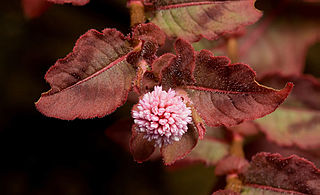
Persicaria is a genus of herbaceous flowering plants in the knotweed family, Polygonaceae. Plants of the genus are known commonly as knotweeds or smartweeds. It has a cosmopolitan distribution, with species occurring nearly worldwide. The genus was segregated from Polygonum.

The genus Fagopyrum is in the flowering plant family Polygonaceae. It includes some important food plants, such as F. esculentum (buckwheat) and F. tataricum. The genus is native to the Indian subcontinent, much of Indochina, and central and southeastern China. Species have been widely introduced elsewhere, throughout the Holarctic and parts of Africa and South America.

Polygonum is a genus of about 130 species of flowering plants in the buckwheat and knotweed family Polygonaceae. Common names include knotweed and knotgrass. In the Middle English glossary of herbs Alphita, it was known as ars-smerte. There have been various opinions about how broadly the genus should be defined. For example, buckwheat has sometimes been included in the genus as Polygonum fagopyrum. Former genera such as Polygonella have been subsumed into Polygonum; other genera have been split off.

James Lauritz Reveal was a U.S. botanist best known for his contributions to the genus Eriogonum and for his work on suprageneric names. His website, at PlantSystematics.org, also presents material on plant taxonomy including the Reveal system. He published extensively on North American flora, was a member of the Angiosperm Phylogeny Group, and was one of the authors of the APG II and APG III classifications.
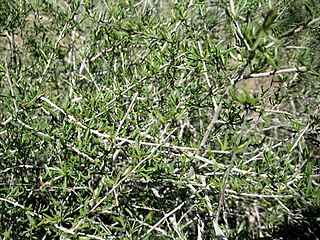
Pteropyrum is a genus of plants in the family Polygonaceae. Plants of the World Online accepts two species, native to Iran, Oman and the Gulf States.

Oxyria is a genus of plants in the family Polygonaceae with three accepted species as of March 2019. It has a circumboreal distribution.

Koenigia is a genus of plants in the family Polygonaceae. The genus Aconogonon has been merged into Koenigia.

Goodmania is a genus of plants in the family Polygonaceae containing the single species Goodmania luteola. Its common name is yellow spinecape. It is a tiny annual herb forming small patches on the ground no more than a few centimeters high and wide. It has fuzzy club-shaped leaves and bears bright yellow flowers. The plant is native to California and Nevada.

Atraphaxis is a genus of flowering plants in the family Polygonaceae with about 40 species.

John Thomas Howell was an American botanist and taxonomist. He became an expert of Eriogonum (buckwheat) species, which are widely represented in the native California flora.

Bistorta is a genus of flowering plants in the family Polygonaceae. As of February 2019 about 40 species are accepted. It has been supported as a separate clade by molecular phylogenetic analysis. Bistorta species are native throughout much of the Northern Hemisphere, as far south as Mexico in North America and Thailand in Asia.
Eriogonum evanidum is a rare species of wild buckwheat known by the common name vanishing wild buckwheat. It is native to southern California and Baja California, where it has been collected from widely scattered areas. Most historical occurrences are now extirpated. Some sources suggested that it was probably extinct, but living specimens were rediscovered in 2007.
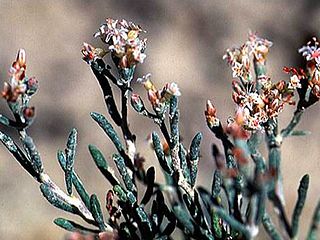
Eriogonum pelinophilum is a rare species of wild buckwheat known by the common name clay-loving wild buckwheat. It is endemic to the state of Colorado in the United States, where it is known from only two counties. The most recent estimates available suggest there are 12 occurrences in existence for a total of about 278,000 individual plants in Delta and Montrose Counties. At least 7 occurrences observed in the past have not been relocated but are not yet believed extirpated. This plant is federally listed as an endangered species of the United States.
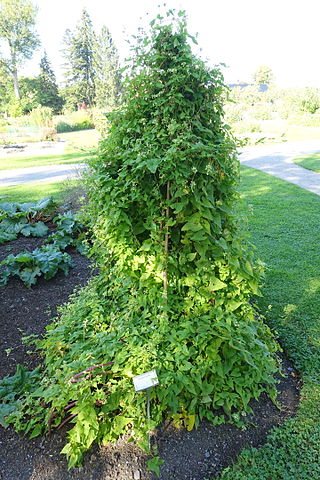
Pteroxygonum is a plant genus in the family Polygonaceae. As of March 2019, two species are recognized. Their native range is from Tibet to southeast China.
Polygonum delopyrum, the fringed jointweed or hairy jointweed, is a plant species endemic to Florida. It is found in pinelands and sandy pine barrens at elevations less than 50 m, in central and southern parts of the state.

Reynoutria is a genus of flowering plants in the Polygonaceae, also known as the knotweed or buckwheat family. The genus is native to eastern China, Eastern Asia and the Russian Far East, although species have been introduced to Europe and North America. Members of the genus, including R. japonica and its hybrid with R. sachalinensis, are highly invasive plants.

Polygonoideae is a subfamily of plants in the family Polygonaceae. It includes a number of plants that can be highly invasive, such as Japanese knotweed, Reynoutria japonica, and its hybrid with R. sachalinensis, R. × bohemica. Boundaries between the genera placed in the subfamily and their relationships have long been problematic, but a series of molecular phylogenetic studies have clarified some of them, resulting in the division of the subfamily into seven tribes.
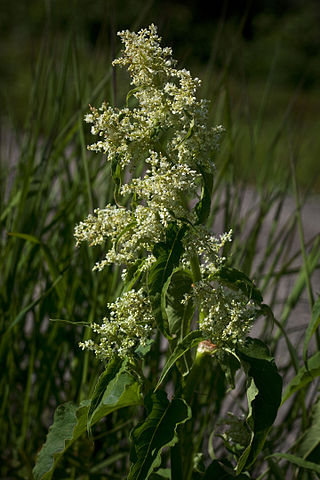
Tanja Magdalena Schuster is a taxonomist from Austria, and the first Pauline Ladiges Plant Systematics Fellow, holding a joint position with the School of Biosciences, University of Melbourne, Victoria, Australia, and the National Herbarium of Victoria, Royal Botanic Gardens Melbourne. Schuster also worked as curator of the Norton-Brown Herbarium at the University of Maryland, College Park.
Johanneshowellia is a genus of flowering plants belonging to the family Polygonaceae.

















